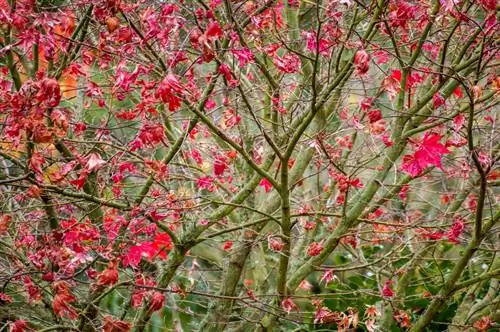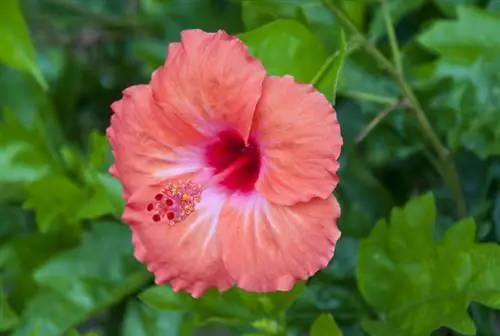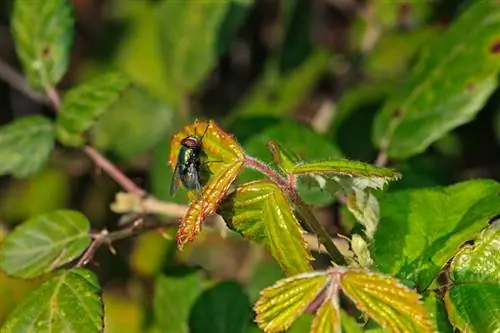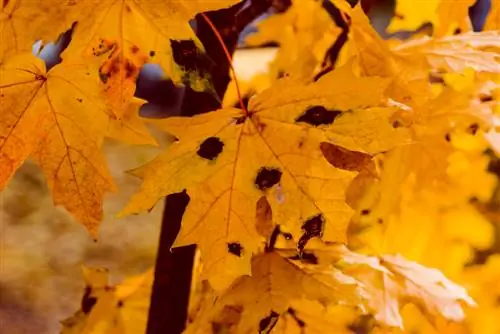- Author admin [email protected].
- Public 2023-12-16 16:46.
- Last modified 2025-01-23 11:20.
Acer palmatum or Japanese Japanese maple originally comes from East Asia, but can also be found in many gardens in Germany as an ornamental tree. The rather slow-growing and small deciduous tree is considered to be quite robust, but can be affected by various diseases, especially due to errors in care and/or choice of location. Like almost all types of maple, the Japanese maple - especially the red Japanese maple - is susceptible to verticillium wilt.

What diseases and pests often affect the Japanese maple?
Common Japanese maple diseases include powdery mildew and verticillium wilt, while typical pests include mites and plant lice. Causes can be incorrect care, unsuitable location or root damage. Adjust care and site selection to improve plant he alth.
Fungal diseases are due to location and/or care errors
Most diseases or infections in Japanese maples are due to incorrect care and/or an unsuitable location. This type of maple is particularly susceptible to powdery mildew and the infamous verticillium wilt. Powdery mildew is typical when the plant is not watered enough on hot summer days. Frequent watering of the foliage can also cause the disease, which is why the leaves should not be wetted when watering. The pathogens that cause verticillium wilt come from the soil and from there penetrate the pathways of the wood.
How do you recognize verticillium wilt?
The causative agents of wilt disease are verticillium fungi that live in the soil and primarily penetrate the wood and block the pathways there. As a result, the Japanese maple is no longer adequately supplied with nutrients and water, so it gradually dies. The first signs are drying leaves and shoots on previously he althy plants that seem to be dying for no reason.
What can you do about verticillium wilt?
Unfortunately, there is no effective fungicide against Verticillium wilt. The only rescue attempt you can do is to transplant or dig up affected Japanese maples and put them in a pot and also cut them back generously. The clippings must under no circumstances be placed in the compost, but should be removed with household waste. You can also activate the resistance of the tree with herbal tonics (€25.00 on Amazon).
What causes dried and/or discolored leaves?
The so-called leaf tip drought occurs in Japanese maples especially when the location is too drafty or too windy. Otherwise, brown leaf spots in very exposed, sunny places indicate sunburn, while dry and / or discolored leaves are usually due to excessive dryness or waterlogging.
Common pests: mites and plant lice
Pests such as spider and gall mites, aphids or scale insects are also an indication that the Japanese maple either does not feel comfortable in its location or is receiving incorrect care.
Tip
Transplanting a planted Japanese maple should only be done if there is really no other option. Ornamental trees often react to root damage with fungal attack, especially with the Verticillium pathogen.






